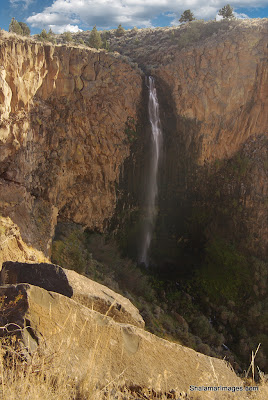Whether you decide on shooting film or digital media, camera choice has very little to do with your ability to convey a well composed dramatic image. Some of the finest photographs hanging in museums around the globe were shot using the most primitive of cameras. The only thing to consider is budget constraints vs. the medium you will choose to display. For Web based applications any thing above 6mp will serve you well. If you plan on displaying in a Brick and mortar gallery I would recommend 10mp and above or shoot medium format film.
How do I select my composition and subject matter?
Landscape Photography is very subjective however there are things you can do to improve the appeal of your photos. Is the subject matter interesting? Do people care? What do you want to communicate to the viewer? Sometimes it’s a good idea to compress a landscape with a Telephoto Lens in order to isolate the important elements. It is often a good idea to follow the rule of thirds so that your images are more aesthetically pleasing. Make sure you exclude the elements that are distracting. Choose a pleasing foreground if possible.
How do I handle harsh or extreme lighting situations?
Lighting will always make or break a photograph, try to avoid shooting in the harsh light of midday and concentrate on early morning pre-dawn and sunrise as well as late evening twilight and sunsets. The greatest and most dramatic light will occur during these times. The use of polarizers and neutral gradient filters is imperative for Landscape Photographers to overcome the deficiencies between extremely bright sky’s and dark foregrounds. Always expose for the highlights, as they cannot be brought back in post-processing. Another technique for handling harsh light is to shoot two photos exposing for the shadows and then another shot exposing for the highlights, merge the images later with your favorite processing software.
How do I keep challenging myself photographically?
Always seek out knowledge by reading everything photographic from: Photography Blogs, E-zine articles, magazines,photography forums, ect. By learning from others and utilizing new techniques in the field you will be able to improve your skills with every outing. Try different locals that provide atypical images. In the harsh winter months when you may be homebound or subject matter may be limited go to your digital darkroom and rework older photographs from earlier in the year. Shoot mushrooms in the fall or maybe put your fast telephoto lens on and shoot some extreme sports or a local event like a marathon run.
How do I carry all my photographic gear?
Very rarely do I see the need to carry your full arsenal of gear to any one shoot. I select the photography gear the shoot will warrant. For backpacking I usually pack my wide-angle lens and a lightweight slow mid range telephoto lens as well as my smaller Manfrotto tripod. I strip down the camera removing straps and battery grips and place in bubble wrap in the top portion of my Gregory Pack. For day trips when I will carry more gear I love my Tamrac 5275 Expedition 5 Photo Backpack (Black)
What tripod should I buy?
There really isn’t one answer here when choosing a tripod as this depends on so may factors including personal shooting preferences. The prevailing wisdom suggests buying the heaviest tripod you are willing to pack around. Carbon Fiber Tripods are extremely popular for the strength and load bearing capabilities vs. weight but tend to be fairly pricey. I personally use the Induro Carbonflex 8x Tripod CX-214
as my workhorse. Considerably less money than the venerable Gitzo brand. I also own a Manfrotto 785 Modo Maxi Photo Video Grip Head Tripod
for small cameras and when on long hikes or backpacking. I really like the clip style leg extensions that all Manfrotto Tripods incorporate.
What about a tripod head?
Most Landscape Photographers I am aware of predominately choose a ball style tripod head for reasons such as fluid movement and little maintenance. I chose the the Giottos Pro Calibrated Ball Head w/Quick Release 1/4IN. Thread MH647; Tension Control; Load 25 Lbs. - Giottos MH1300-657
and have been very happy with it.
What filter system do you recommend ?
As I have stated before the use of graduated neutral density filters is a must for Landscape Photographers but the question is, what system will hold those filters in front of you’re lens in a secure manner. I use threaded screw on style circular polarizers along with neutral (no effect on color) density filters. When it comes to graduated filters I like the Cokin Filter Holder for Z Series Filters
. Cokin makes several systems but it’s important to remember that when using wide-angle lenses that vignetting can be a real problem. The Z pro or the X pro are designed for such wide angle applications. I have heard great thing about the Lee Foundation Filter holder as well.
Which are better filter materials glass or resin ?
Cokin uses an organic glass called CR39 however this material will scratch if care is not taken. Other filter manufactures like Lee make a glass filter LEE Filters .9 ND - Filter - graduated neutral density soft
that will also fit in your Cokin holder and as an added benefit they are 100mm long and easier to place or even hand hold and will never scratch.

